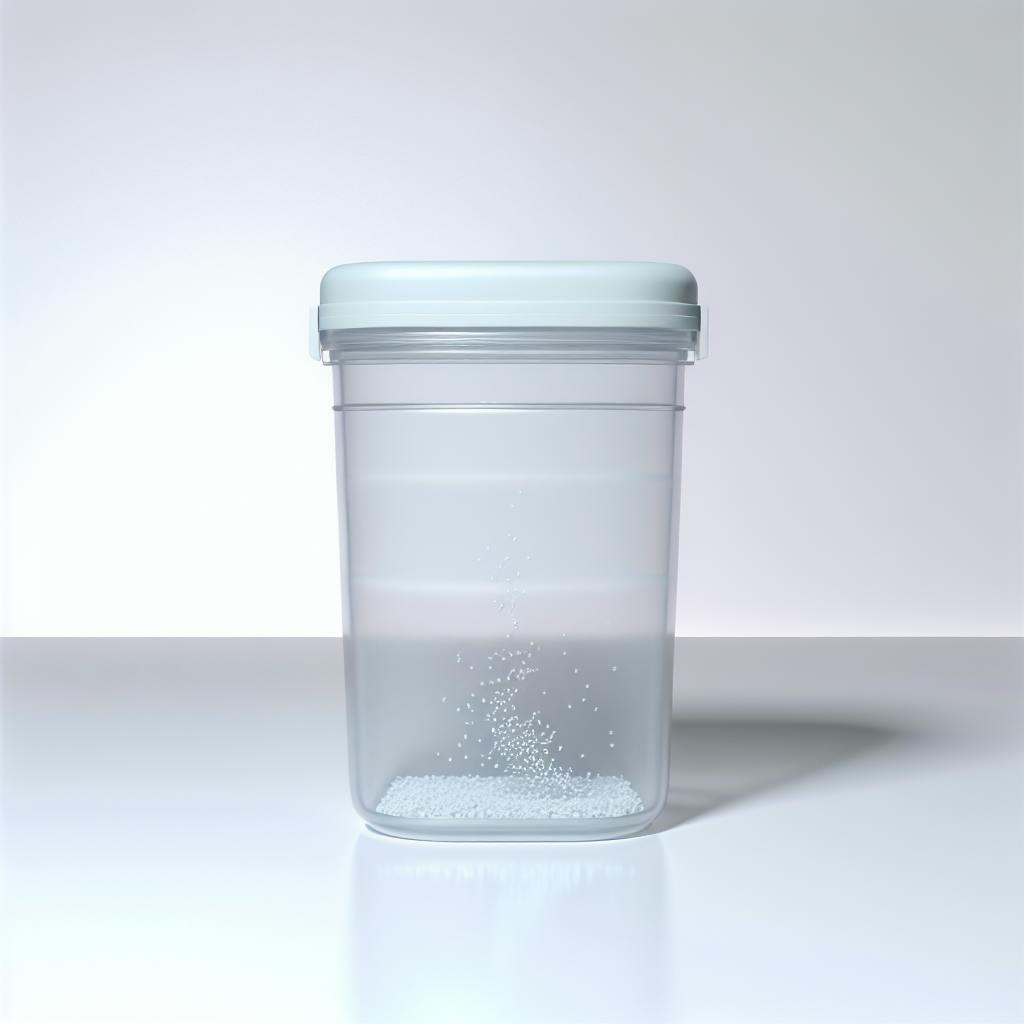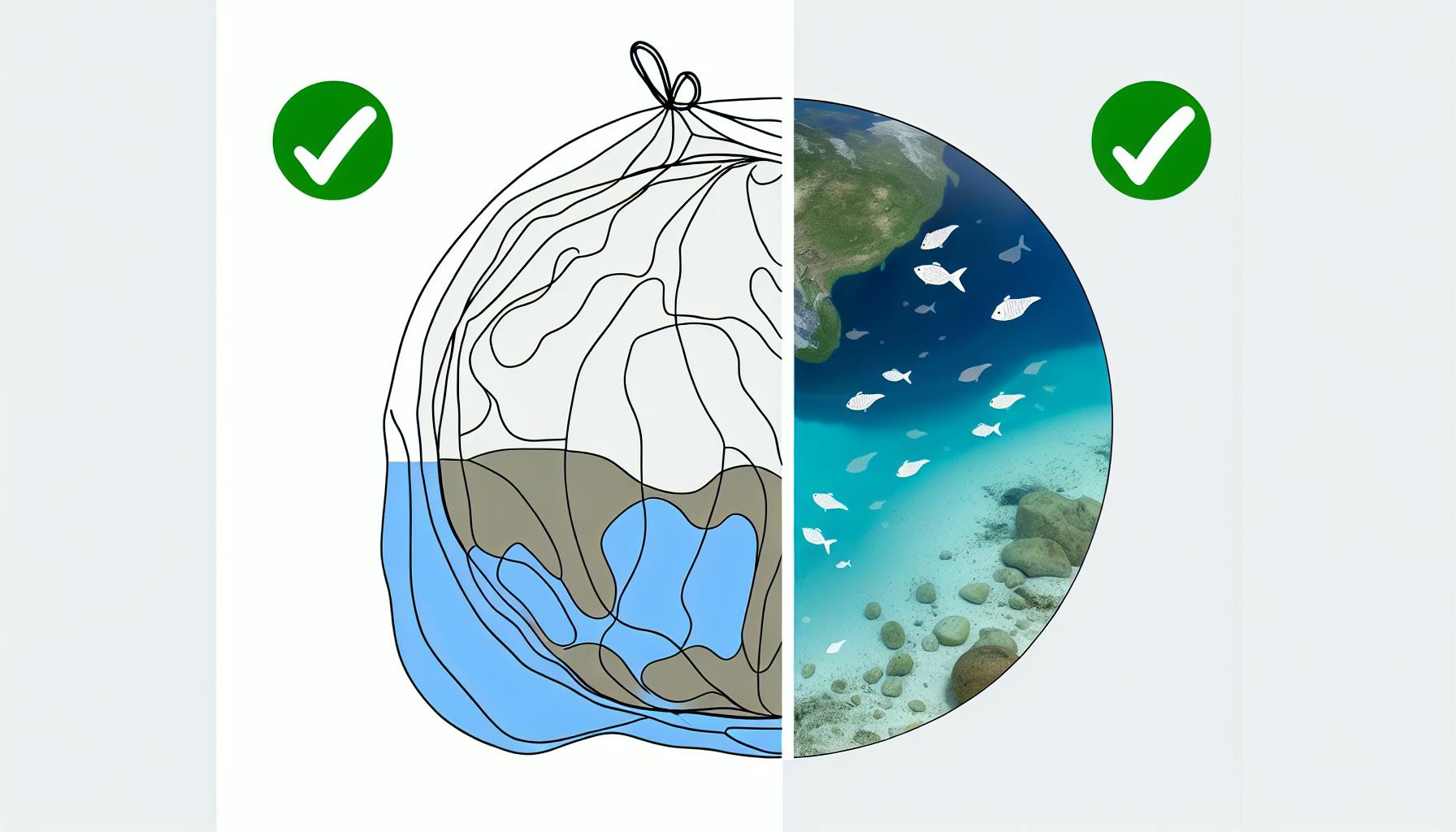- Recent studies have found tiny plastic particles called microplastics in human lung tissue samples, raising concerns about potential health risks.
- Microplastics can enter the lungs through inhalation, especially in indoor environments where levels are often higher.
- Once in the lungs, microplastics may cause inflammation, oxidative stress, and damage to the lung's protective barrier, potentially leading to respiratory issues and lung diseases.
Potential Effects of Microplastics in the Lungs
| Effect | Description |
|---|---|
| Inflammation | Microplastics can trigger an inflammatory response, leading to the release of immune cells and chemicals that may damage lung tissue. |
| Oxidative Stress | Microplastics may generate harmful oxygen molecules, disrupting the balance and causing cellular damage. |
| Barrier Dysfunction | Microplastics can weaken the lung's protective barrier, making it easier for pathogens and allergens to enter. |
- While more research is needed, some respiratory diseases and conditions have been associated with microplastic exposure, including asthma, COPD, interstitial lung diseases, and respiratory infections.
- To reduce exposure, individuals can use air filters, avoid unnecessary plastics, and support eco-friendly companies, while policymakers should consider stricter regulations and promote sustainable alternatives.
Key Takeaways
- Microplastics have been found in human lung tissue, indicating inhalation as a route of exposure.
- Potential health impacts include inflammation, breathing issues, and links to lung diseases like asthma and COPD.
- Further research is needed to fully understand the long-term effects and identify at-risk groups.
- Reducing plastic pollution and minimizing exposure through individual and policy actions are crucial steps.
Stay informed and take action to minimize your exposure to microplastics and support efforts to reduce plastic pollution.
Related video from YouTube
Microplastics and Lung Health
How Microplastics Enter and Stay in the Lungs
We can inhale tiny microplastic particles from the air around us, especially indoors where levels are often higher. These small pieces can travel deep into our lungs, bypassing the body's natural defenses. Once there, microplastics can build up and remain in the lung tissue because they don't break down easily.
In a recent study, researchers found microplastics in all parts of the lungs, including the lower sections with smaller airways. They detected 39 microplastics in 11 out of 13 lung tissue samples, with an average of 3 microplastics per sample. The most common types were polypropylene, polyethylene terephthalate (PET), resins, and polyethylene.
Potential Effects on Breathing and Lung Function
Inhaled microplastics may cause inflammation, oxidative stress, and damage to the lung's protective barrier. These effects could impair lung function and worsen respiratory conditions.
| Effect | Description |
|---|---|
| Inflammation | Microplastics can trigger an inflammatory response, leading to the release of immune cells and chemicals that may damage lung tissue. |
| Oxidative Stress | Microplastics may generate harmful oxygen molecules, disrupting the balance and causing cellular damage. |
| Barrier Dysfunction | Microplastics can weaken the lung's protective barrier, making it easier for pathogens and allergens to enter. |
These mechanisms can contribute to respiratory symptoms like coughing, wheezing, and shortness of breath, ultimately affecting overall lung function.
Respiratory Diseases Linked to Microplastic Exposure
While more research is needed, several respiratory diseases and conditions have been associated with microplastic exposure:
-
Asthma: Microplastics may trigger or worsen asthma symptoms by causing airway inflammation and increased sensitivity.
-
Chronic Obstructive Pulmonary Disease (COPD): Microplastics could potentially worsen COPD by causing further lung tissue damage and reduced lung function.
-
Interstitial Lung Diseases: Long-term exposure to microplastics may contribute to the development of these diseases, characterized by scarring and stiffening of lung tissue.
-
Respiratory Infections: Microplastics may weaken the respiratory system's defenses, increasing the risk of infections by allowing pathogens to enter and persist more easily.
Further research is needed to establish definitive links and understand the underlying mechanisms behind these potential associations.
Research on Microplastics in the Lungs
Microplastics Found in Human Lung Tissue
Studies have found tiny plastic particles in human lung tissue samples. In 2022, researchers at Hull York Medical School detected microplastics in 11 out of 13 lung tissue samples from surgery patients. The particles were spread throughout the lungs, with higher amounts in the lower regions.
Another study in 2021 analyzed 20 lung tissue samples from autopsies. Microplastics were present in 13 of these samples. The researchers identified various plastic types, including polypropylene, polyethylene, and polyvinyl chloride (PVC).
Detecting Microplastics in Lungs
Researchers use advanced techniques to identify and analyze microplastics in lung tissue samples:
-
μFTIR Spectroscopy: This method uses infrared light to determine the chemical makeup and plastic types of microplastics. It can detect particles as small as 3 micrometers.
-
Raman Microspectroscopy: This technique analyzes the molecular structure of microplastics, providing information about their chemical composition and plastic types.
These methods allow researchers to distinguish microplastics from other particles and identify the specific plastic types present in the lung tissue.
Key Findings and Health Impacts
Key findings from research on microplastics in human lungs include:
- Microplastics are present in lung tissue samples, indicating inhalation as a route of exposure.
- The most commonly detected microplastics are polypropylene, polyethylene, polyethylene terephthalate (PET), and resins.
- Higher concentrations of microplastics are often found in the lower regions of the lungs.
- Microplastics may trigger inflammation, oxidative stress, and impair the lung's protective barrier, potentially contributing to respiratory diseases.
- Potential links have been suggested between microplastic exposure and conditions like asthma, COPD, and interstitial lung diseases, but more research is needed to confirm these connections.
These findings raise concerns about the potential health impacts of inhaling microplastics, highlighting the need for further investigation and preventive measures.
Comparing Research Results
| Study | Sample Size | Lung Regions Analyzed | Types of Microplastics Detected |
|---|---|---|---|
| Hull York Medical School (2022) | 13 | Upper, Mid, Lower | Polypropylene, PET, Resins |
| Amato-Lourenço et al. (2021) | 20 | Various | Polypropylene, Polyethylene, PVC |
| Chen et al. (2022) | 18 | Various | Polyethylene, Polypropylene, PVC |
While the studies vary in sample size and lung regions analyzed, they consistently detect microplastics, particularly polypropylene, polyethylene, and PET, in human lung tissue. The findings highlight the widespread presence of microplastic pollution and the potential for inhalation exposure.
sbb-itb-1dc3f59
Implications and Future Research
Public Health Concerns
The discovery of microplastics in human lung tissue raises worries about public health. This highlights the need for authorities to set limits on microplastic exposure, especially indoors and in workplaces where inhalation risks may be higher.
Public awareness campaigns are crucial to inform people about potential health risks from inhaling microplastics and promote ways to reduce exposure. Adding microplastic pollution to air quality monitoring programs could provide valuable data for risk assessment and prevention strategies.
Knowledge Gaps and Areas for Further Study
While finding microplastics in lung tissue is concerning, there are still significant gaps in understanding their long-term health effects and behavior in the respiratory system. Further research is needed to:
1. Investigate Long-term Health Impacts
Long-term studies are essential to understand the potential long-term consequences of microplastic inhalation on respiratory health, including the development of chronic conditions such as asthma, COPD, and lung cancer.
2. Explore Microplastic Behavior in the Lungs
More research is needed to understand how microplastics interact with lung tissues, their potential to move to other organs, and the body's mechanisms for clearing or retaining these particles.
3. Identify Vulnerable Populations
Studies should examine whether certain populations, such as children, the elderly, or individuals with pre-existing respiratory conditions, are more susceptible to the adverse effects of microplastic inhalation.
4. Assess Exposure Levels and Sources
Comprehensive assessments of microplastic concentrations in indoor and outdoor environments, as well as the identification of major sources, are crucial for developing effective exposure reduction strategies.
Reducing Microplastic Exposure
While further research is necessary, individuals and policymakers can take proactive steps to mitigate microplastic exposure and potential health risks:
| Step | Description |
|---|---|
| Promote Sustainable Alternatives | Encourage the development and adoption of sustainable alternatives to single-use plastics and microplastic-containing products to reduce the overall environmental burden of microplastics. |
| Implement Stricter Regulations | Policymakers should consider implementing stricter regulations on microplastic emissions from various sources, such as industrial processes, textile manufacturing, and waste management practices. |
| Improve Air Filtration Systems | Enhancing air filtration systems, particularly in indoor environments, can help reduce the concentration of airborne microplastics and minimize inhalation exposure. |
| Raise Public Awareness | Educating the public about the sources and potential health risks of microplastic exposure can empower individuals to make informed choices and adopt practices that minimize their exposure. |
Conclusion
Key Points
- Recent studies found tiny plastic pieces in human lung tissue, raising health concerns.
- These microplastics can enter the lungs through breathing and may cause:
- Inflammation
- Breathing problems
- Potential links to lung diseases like asthma and COPD
- More research is needed to fully understand the long-term effects of microplastic exposure on respiratory health and identify at-risk groups.
Stay Informed and Take Action
- Follow trusted sources for the latest updates on microplastics and their health impacts.
- Support efforts to reduce plastic pollution, such as using sustainable alternatives and stricter regulations.
- Minimize your exposure by using air filters, avoiding unnecessary plastics, and supporting eco-friendly companies.
- Advocate for public awareness campaigns to educate people on reducing microplastic exposure.
| Potential Effects | Description |
|---|---|
| Inflammation | Microplastics may trigger an immune response, leading to lung tissue damage. |
| Breathing Issues | Inflammation and tissue damage can cause symptoms like coughing, wheezing, and shortness of breath. |
| Lung Disease Links | Possible connections to asthma, COPD, and other respiratory conditions, but more research is needed. |
FAQs
What happens if you breathe in microplastics?
When you inhale microplastics, these tiny plastic particles can build up in your lungs. They may cause:
- Inflammation: Microplastics can trigger an immune response, leading to inflammation and potential damage to lung tissue.
- Breathing Issues: Inflammation and tissue damage may result in respiratory symptoms like coughing, wheezing, and shortness of breath.
Some studies suggest a possible link between microplastic exposure and lung diseases like asthma and COPD. However, more research is needed to fully understand the long-term health effects.
Have microplastics been found in living humans' lungs before?
Yes, recent studies have detected microplastics deep within the lungs of living people for the first time. Using advanced techniques, scientists identified a total of 39 microplastic particles in all regions of the lung, including the lower sections with smaller airways.
This groundbreaking research provides evidence that humans are inhaling and accumulating microplastics in their lungs during their lifetime.
| Microplastic Effects | Description |
|---|---|
| Inflammation | Triggers an immune response, leading to lung tissue damage. |
| Breathing Problems | Inflammation and tissue damage can cause coughing, wheezing, and shortness of breath. |
| Potential Disease Links | Possible connections to asthma, COPD, and other respiratory conditions, but more research is needed. |


